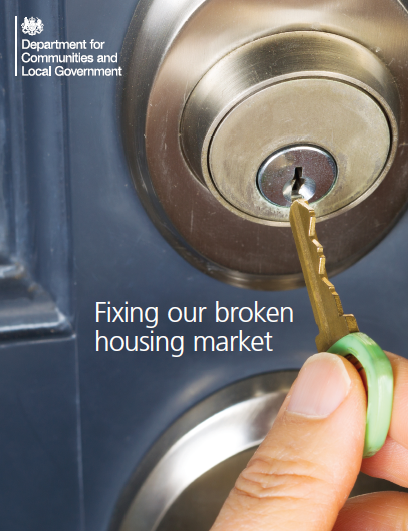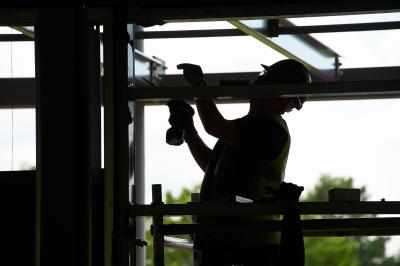Fixing our broken housing market - government white paper
The 'Fixing our broken housing market' white paper launched in February 2017 continues in the same hard-hitting fashion of the Farmer Report ‘Modernise or Die’ published in October 2016.
It begins with the introduction, ‘The housing market in this country is broken, and the cause is very simple: for too long, we haven’t built enough homes.’
Since the 1970s, there have been around 160,000 new homes built each year in England. The consensus is that we need between 225,000 and 275,000 or more new homes per year to keep up with population growth and start to tackle years of under-supply. This isn’t because there’s no space or because the country is “full”- only around 11% of land in England has been built on.
The white paper indicates that the problem is threefold:
- there aren't enough local authorities planning for the homes they need
- house building is simply too slow
- the construction industry is too reliant on a small number of big players
The laws of supply and demand mean the result is simple...
Since 1998, the ratio of average house prices to average earnings has more than doubled. That means the most basic of human needs - a safe, secure home to call your own, is just a distant dream for millions of people, and it’s a dream that’s moving further and further away.
In 21st century Britain it’s no longer unusual for houses to “earn” more than the people living in them. In 2015, the average home in the South East of England increased in value by £29,000, while the average annual pay in the region was just £24,542.
The proposals in the white paper set out how the government intends to boost housing supply and, over the long term, create a more efficient housing market whose outcomes more closely match the needs and aspirations of all households and which supports wider economic prosperity.
The paper seeks responses to a series of questions covering:
- Getting plans in place
- Making enough land available in the right places
- Strengthening neighbourhood planning and design
- Providing greater certainty
- Ensuring infrastructure is provided in the right place at the right time
- Holding developers and local authorities to account
- Affordable housing
- Sustainable development
- Meeting the challenge of climate change
- Flood risk
- Noise and other impacts on new developments
- Onshore wind energy
Make your voice heard
The consultation closes on 2 May 2017 and if you haven’t already, there’s still time to contribute at:
https://www.gov.uk/government/publications/fixing-our-broken-housing-market
Sign up to the building bulletin newsletter
Over 48,000 construction professionals have already signed up for the LABC Building Bulletin.
Join them and receive useful tips, practical technical information and industry news by email once every 6 weeks.
Subscribe to the Building Bulletin




Comments
(No subject)
Submitted 6 years 7 months ago
Too much red tape, reports, conditions, all slowing development.
(No subject)
Submitted 6 years 7 months ago
(No subject)
Submitted 6 years 7 months ago
What has the Conservatve government been doing since 2010 - that 7 years later it has got round to publishing a White Paper on the subject. Zut alors!
(No subject)
Submitted 6 years 7 months ago
For "starter" homes we need to revert to using the similar prefabrication methods to those that were implemented after WW2, and cut out all the fancy expensive frills such as so called "luxury" fitted kitchens and bathrooms - they are only faced chipboard anyway.
For city centres greater densities can be achieved by reverting to "mansion blocks" as opposed to high rise, with communal private gardens.
We should also make it far simpler for small local builders to develop smaller plots of a handful of houses within established communities, and also for individuals in the self-build market to do likewise. The stranglehold of the mass housing developers MUST be broken.
Site footprint could also be reduced by abolishing some of the crazy requirements that some Planning and Highways Authorities impose in respect of parking numbers and vehicle turning space within site boundaries. I recently was forced to change a 2 dwelling development (a pair of semi-detached houses) to a larger single dwelling because planners and highways insisted on 2 "average" car spaces and reversing space for both within the confines of each site. As the development was an infill between adjacent properties with established building lines this requirement was ludicrous particularly as all other properties in the road, both semis and detached, have simple driveways with no manoeuvring zone.
The Planning process could also be speeded up if Planners were told to keep their noses out of matters that really fall within the remit of Building Control (eg. sustainability, energy efficiency). Such matters can be Conditioned for later resolution. The need for such detailed information at the Planning stage increases the design time and un-necessarily inflates the final development cost.
Webmaster note
Submitted 6 years 7 months ago
Add new comment